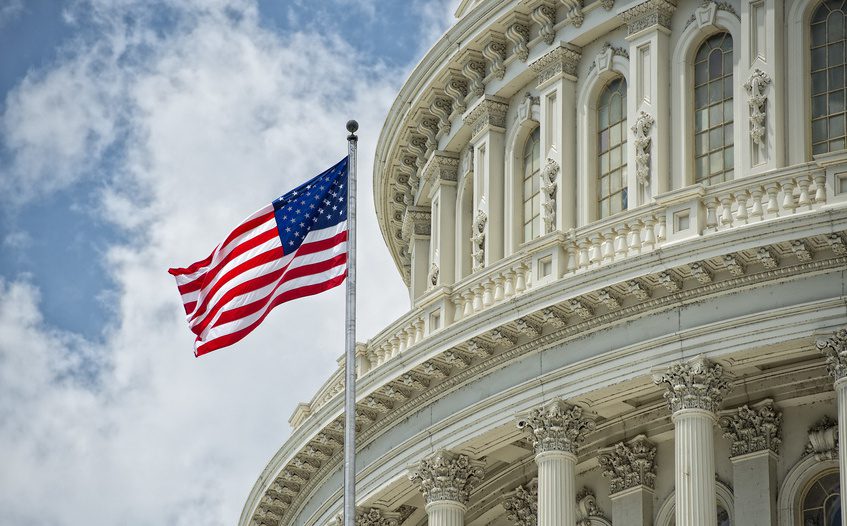
U.S. equity markets have taken investors on a wild roller-coaster ride over the last several days. Equities started free-falling after U.S. wage data released on Friday, Feb. 2, showed positive results. While economic news continues to be good, it raises the specter that the Fed will raise interest rates to ward off inflation.
Higher interest rates would result in higher borrowing costs for companies and businesses. Not only that, it would become more expensive for consumers to buy cars and homes.
It turned out that Friday’s drop was just the tipping point. The stock market went on a wild ride again on Monday, with the Dow Jones Industrial Average closing down 1,175 points. This represented the worst point drop in history. And at one point Monday afternoon, the Dow was down 1,579 points, which was the largest intraday point drop in the history of the index.
If all this market anxiety had you reaching for the Dramamine, you aren’t alone. Most people are invested in the market in one way or another. So, many households felt the sting, and it has only slightly abated as the market has begun to recover some of its losses. Read More

If you think choosing when to start claiming Social Security benefits can be confusing, you’re right. But did you know there is even more to consider when deciding when to start collecting those benefits?
If you are approaching or planning for retirement, you need a Medicare enrollment strategy that synchronizes with your Social Security claiming strategy in order to:
- Reduce your risk of losing benefits,
- Prevent you from incurring penalties, and
- Maximize your benefits from both programs for the rest of your life.
Medicare and Social Security are programs that “talk to each other.” Missed deadlines or poorly-timed benefit claims could mean as much as thousands of dollars of lost income.
What we don’t know can hurt us. So, here’s a quick look at why you must verify deadlines and information for each program so everything is done right. Read More

Many people worry about running out of money in retirement. Choosing the right time to claim Social Security can make a big difference. By figuring out your break-even age for social security, you can maximize your benefits and worry less about your finances.
In this blog, we’ll explain the break-even age, how to calculate it, and why it’s so important for your retirement planning.
Read More

Millions of Americans depend on life insurance for financial protection, not to mention for many other reasons. But as people get older, insurance coverage may seem out of reach. Many seniors think they don’t have good life insurance options due to age or health.
Even if you are in your golden years or not quite there, the good news is you do have choices. For example, there are some life insurance policies that may be bought up till age 90. That isn’t the most frequent age to get life insurance for seniors, but it’s helpful to know there are options for just about any life-stage. Some insurance options might also be available for those who may not be in the best health. Read More

Everyone breathed a sigh of relief when the government shutdown ended this month. As InvestmentNews noted, bond yields are in flux, and the shutdown could have made things worse.
But while that ship has sailed, other risks still loom on the horizon. Industry analysts point to changing rates overseas, inflation, and predicted Fed rate hikes at home as potential bond market movers. A report from Deutsche Bank lists them, among other concerns, as 30 market risks to watch in 2018. And what’s at the top of that report list? “U.S. inflation moving higher in 2018 Q2.” Read More

If you are among the growing numbers of Americans reaching their retirement savings goals, congratulations!
According to the Center for Retirement Research, 50% of working-age Americans report they could maintain their pre-retirement standard of living in retirement, as measured by the Center’s National Retirement Risk Index. This is a 2% improvement over the center’s previous measure of retirement readiness in 2013.
Thanks to rising home values and stock market all-time highs, the account balances of employer and individual retirement savings plans are flush. So, now that your retirement savings goal is achieved, what should you do next to enjoy the retirement you have worked hard for over many years? Read More

No matter how much we have prepared for retirement, it often seems that we could be doing more. As people live longer and need more money, there’s increased pressure to step up saving. But what if, in addition to funding your own retirement, you also had to provide financial support to your parents?
According to TD Ameritrade, 25% of baby boomers already support another adult. Around 8% of those adults are aging parents. What’s more, 20% of Gen Xers also support other adults, with 13% being their parents.
Most of this support went to general living expenses and medical bills, with financial supporters paying an average of $12,000 per year to help loved ones.
So, what if your parents don’t have enough money for their retirement needs? It’s more than likely you will help them with care and support, but this could inhibit your own retirement plans in the process. Read More

If anything, the new year tends to be a time of reinvention. From resolutions of healthier eating or more frequent exercise to more diligence with household finances, there is no shortage of areas for self-improvement.
For people aged 50 and over, it’s another year closer to retirement. You have spent a long time preparing and setting aside money to be able to retire when and how you want to. After many years of careful preparation and personal sacrifices, this milestone can seem close and yet far away.
If your retirement date is within the next five years, now is a great time to refocus on your retirement planning goals. Here are a few steps you might need to take now for enjoying greater financial confidence in your golden years. Read More

Countless surveys say that Baby Boomers and Gen Xers aren’t saving enough for retirement. But a recent survey from Transamerica Center for Retirement Studies shows another place where American workers are falling short: preparing for work in retirement.
In the study, 56% of workers said they expect to work at least part-time past age 65. Among Baby Boomers, 6 in 10 (65%) expect to or already working past the traditional retirement age. More than half of Gen Xers (56%) also planned on at least part-time employment during retirement.
However, that vision may be out of reach, as few workers seem to be taking steps to make it happen. Less than half of workers (46%) are keeping their skills up-to-date, a finding that held for Baby Boomers and Gen Xers alike. And only 18% are scoping out the job market and opportunities available, with 15% of Baby Boomers and of Gen Xers alike reporting an active lookout.
Overall, a number of workers seemed to believe their employers would let them stay on part-time — which well could not happen due to present employment market conditions and practices. Meanwhile, the findings don’t bode well for expectations of working past 65. That’s even as 83% cited financial reasons as why they plan to continue doing so. Read More

Editor’s Note: The following is editorial content that has been contributed by Marion R. Hutton.
To some people, supplemental insurance might seem a little redundant. After all, insurance can be considered a ‘just-in-case’ type of financial arrangement, and to augment this precaution with another provisional measure in the form of supplemental insurance might not immediately make sense.
However, it is necessary to delve into common insurance policies and how supplemental insurance packages can help you rest easier. With that in mind, this article discusses the basics of what supplemental insurance is, particularly with regard to life and health insurance, and when it is necessary to purchase one. Read More


















